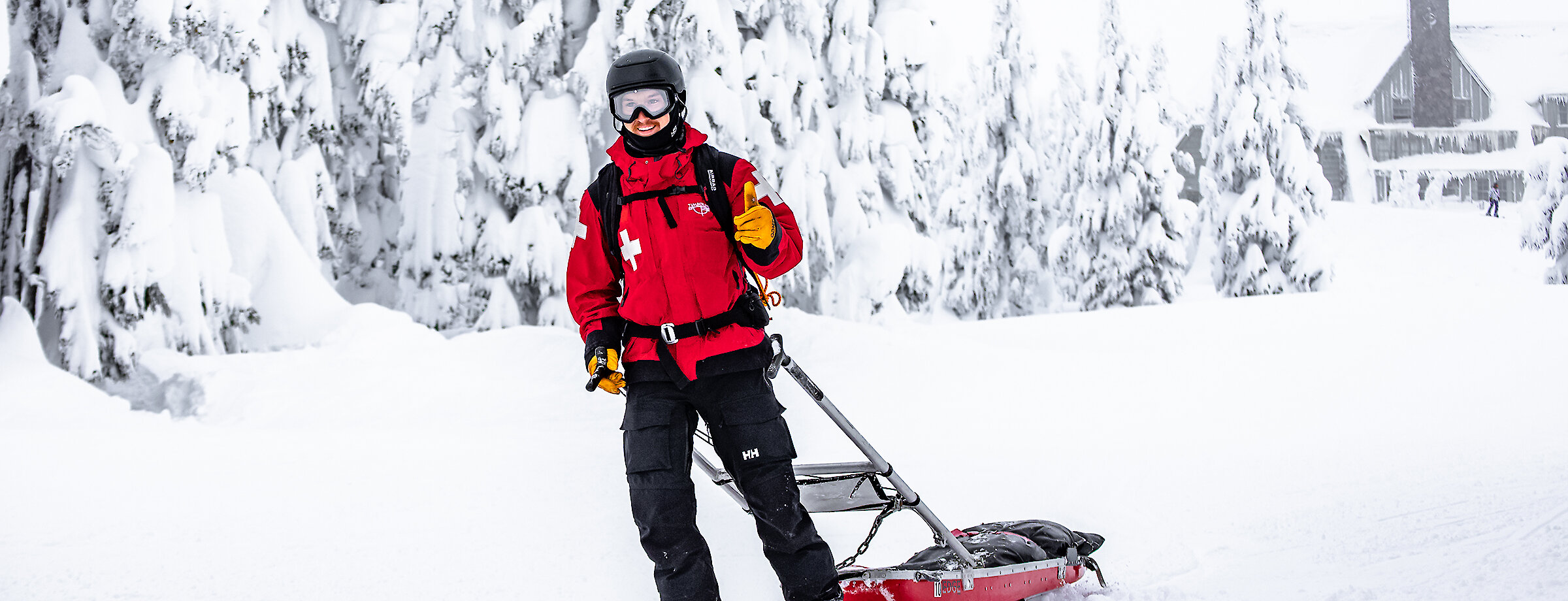
Mountain Safety Mountain Safety
Safety is a shared responsibility. Ski and ride responsibly at Timberline Lodge on Mt. Hood. Your safety—and the safety of others—depends on it. Please follow all mountain rules, posted signs, and the Skier Responsibility Code. For assistance or emergencies, contact Ski Patrol at (503) 272-3305.
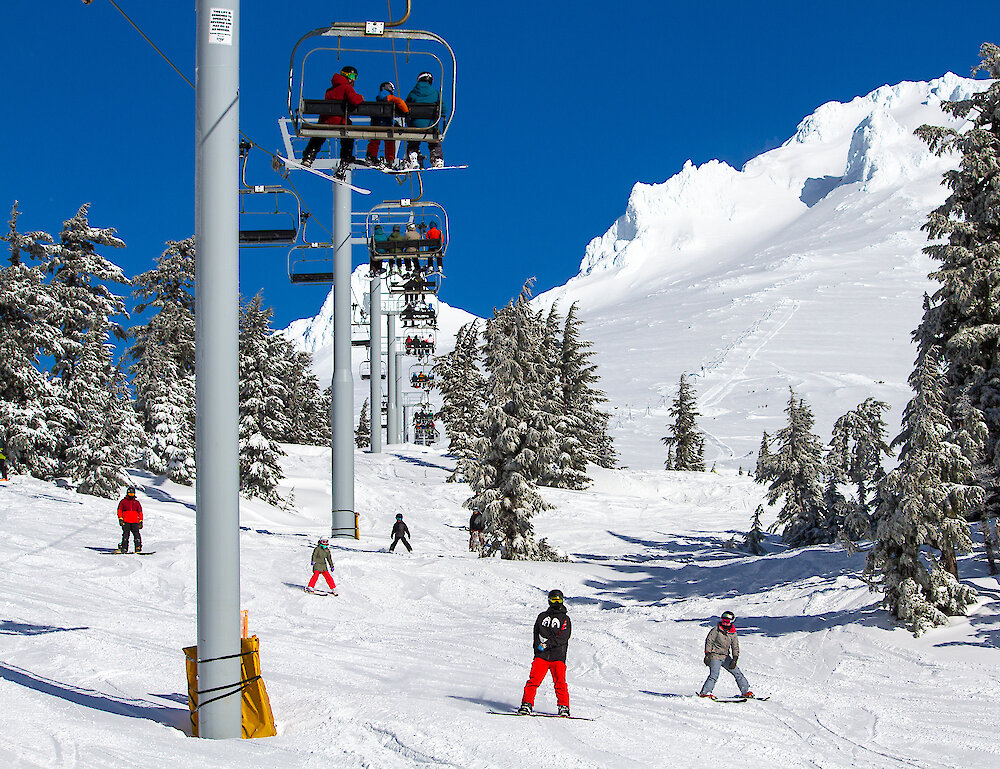
RULES OF USE
Timberline Ski Area on Mt. Hood operates under a Special Use Permit. Please follow all posted rules, the Skier Statute, and Code.
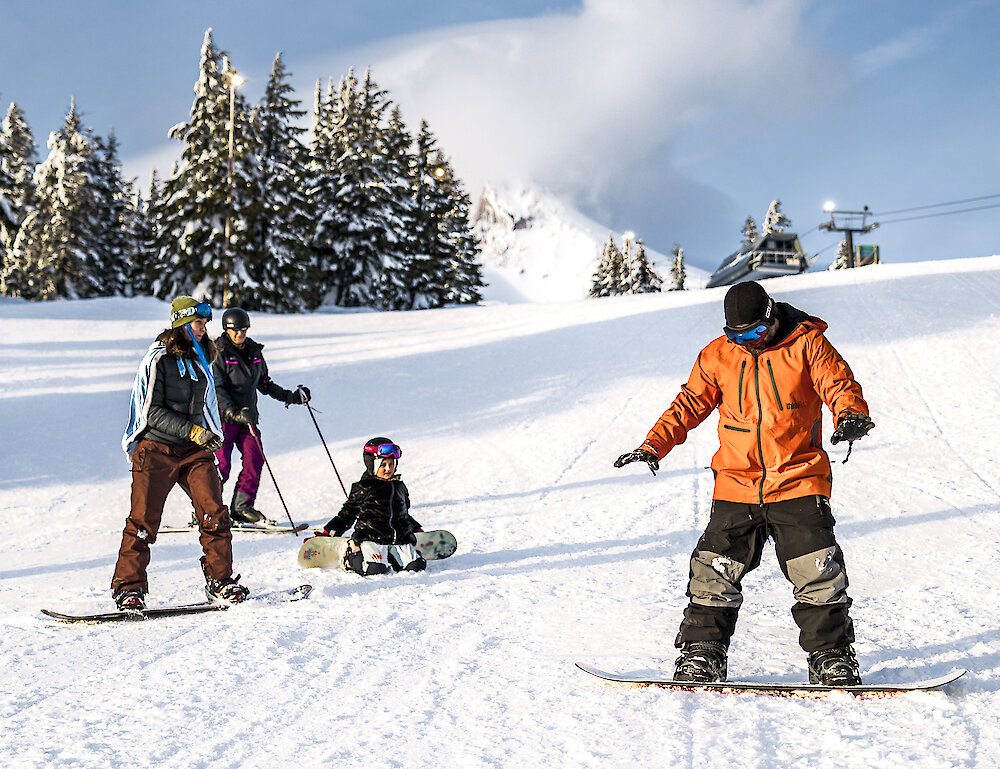
GUEST SAFETY
Ski and ride your way—alpine, snowboard, telemark, cross country, adaptive. Show courtesy, stay aware, and ride smart to reduce risk.
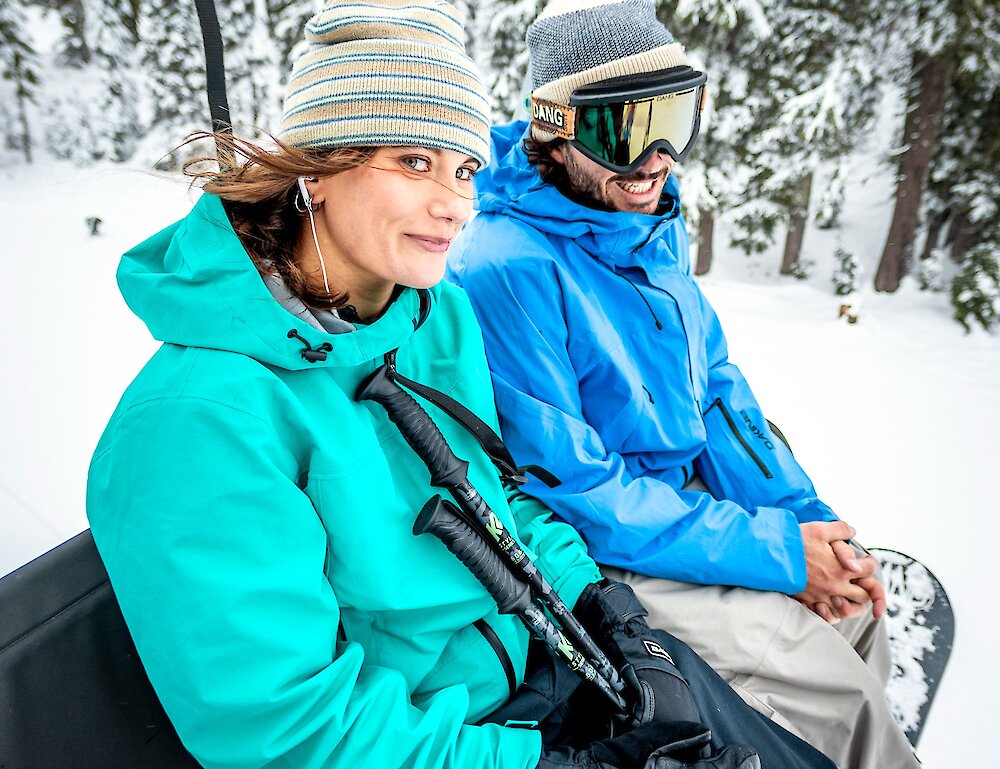
CHAIR LIFT SAFETY
Chairlifts are safe, but know loading, riding & unloading rules. Teach kids, be courteous, and prioritize safety on every ride.
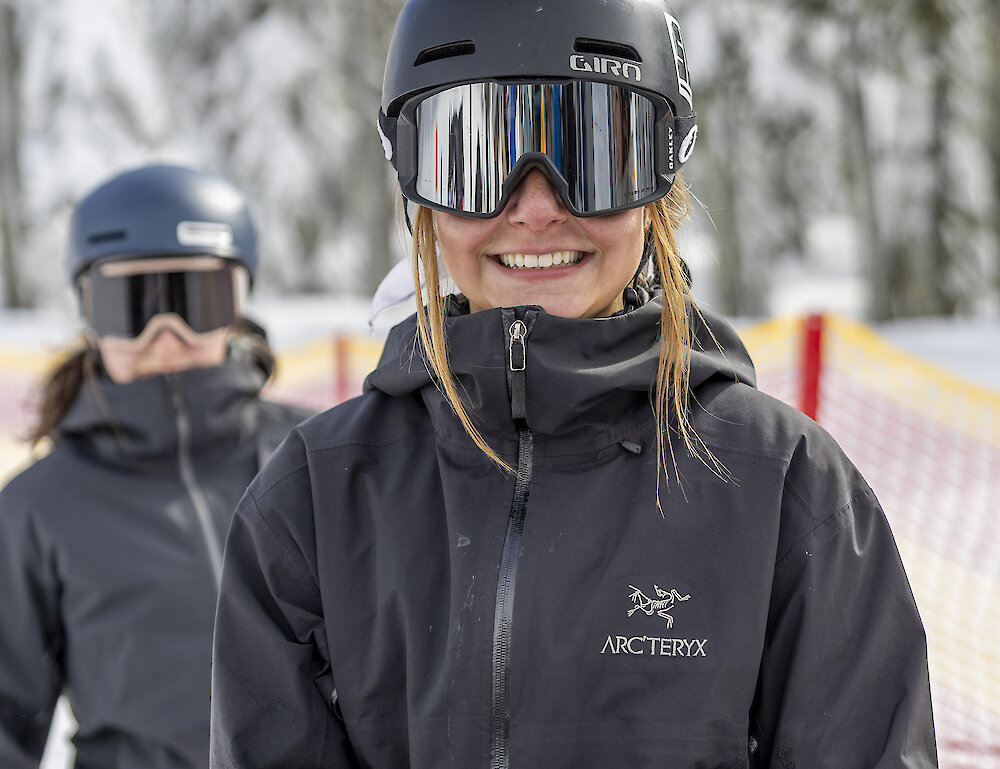
HELMET USE
Helmets are strongly recommended for all skiers and riders. Protect your head, stay safe, and enjoy the slopes responsibly!
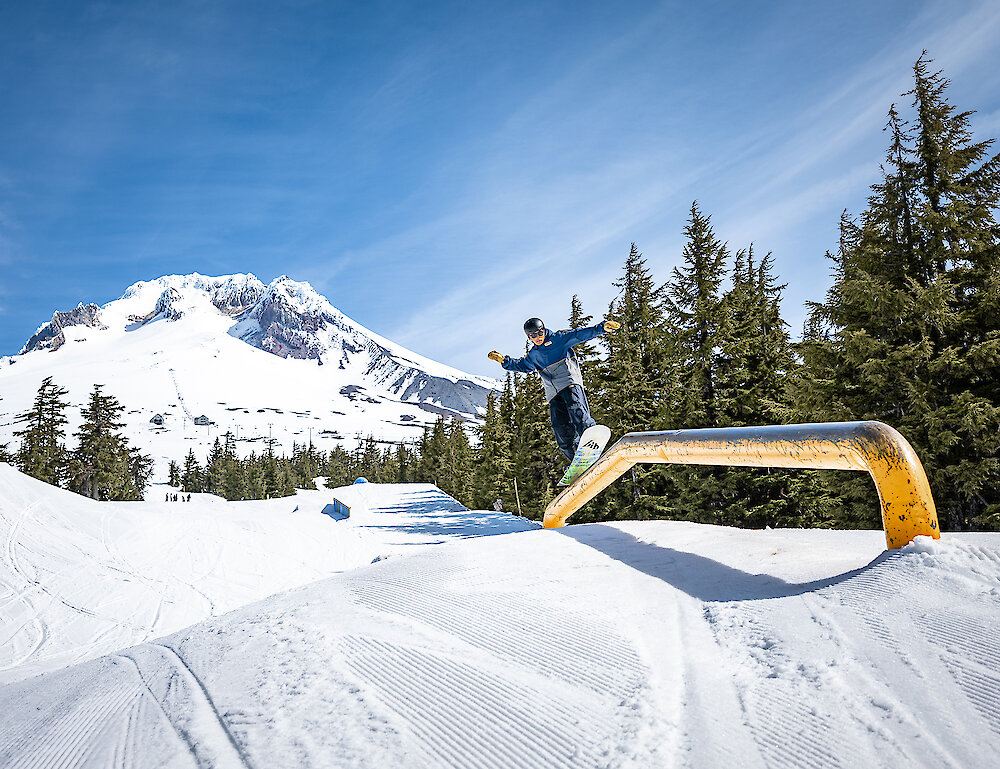
TERRAIN PARK SAFETY
Start small, know your limits, and watch for others. Respect signs and space—smart choices keep the terrain park fun and safe!
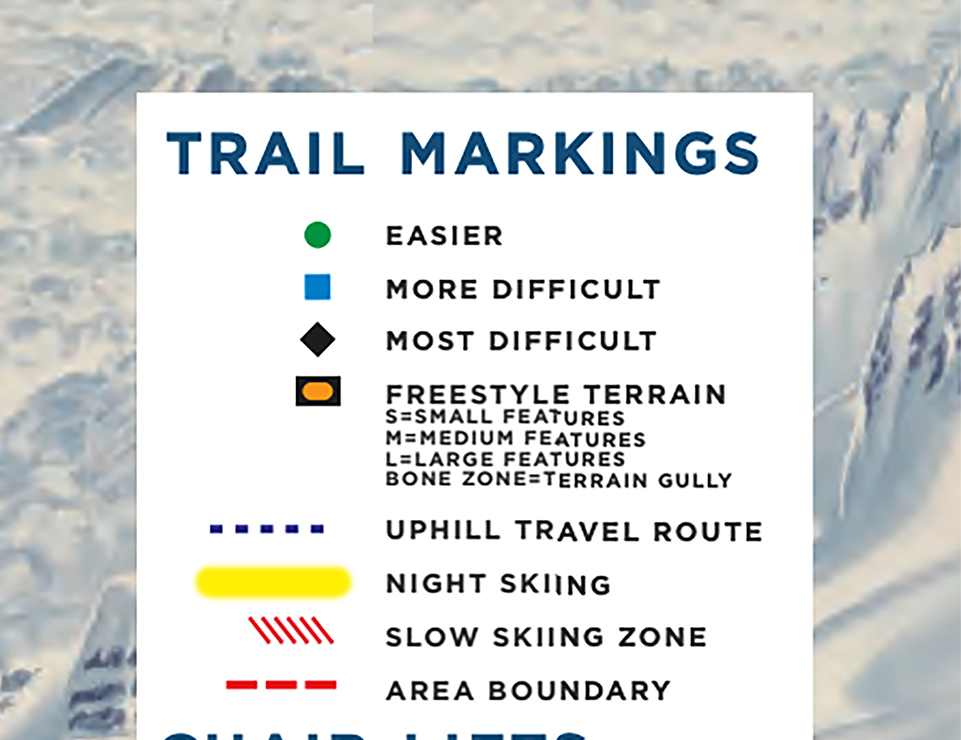
TRAIL SIGNAGE
Grab a trail map, check the lifts and trail symbols, and know the difficulty. A few minutes now makes your first days on slopes safer!
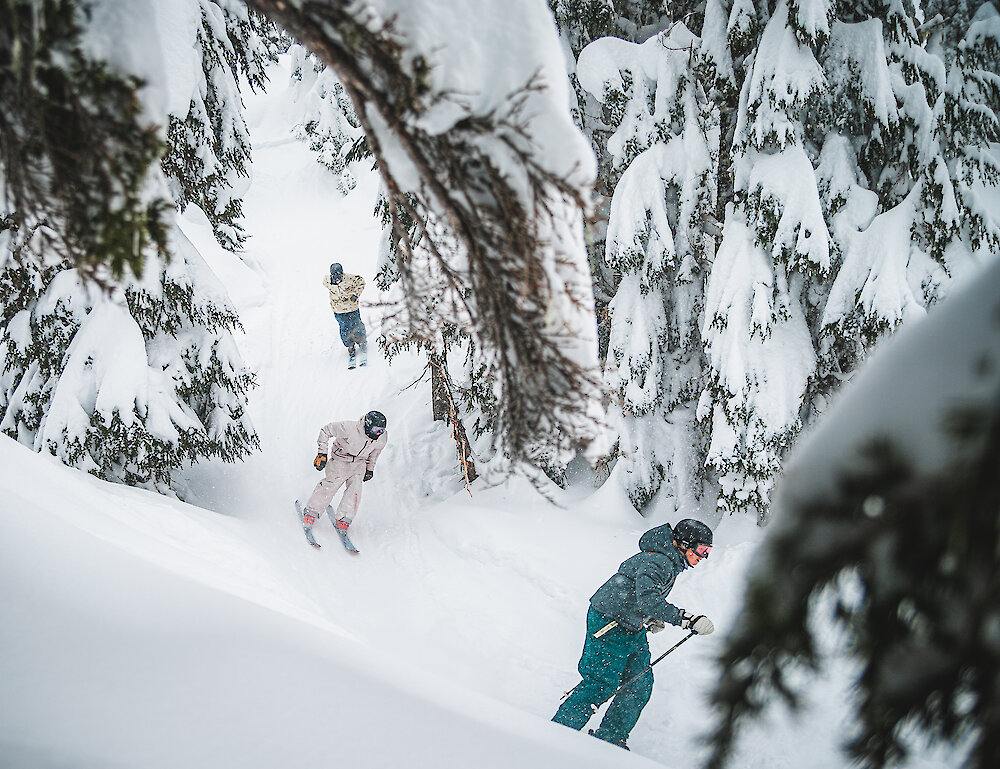
DEEP SNOW & TREEWELL SAFETY
The Pacific Northwest’s deep maritime snowpack can create an unexpected danger of being trapped in the unseen void next to large trees.
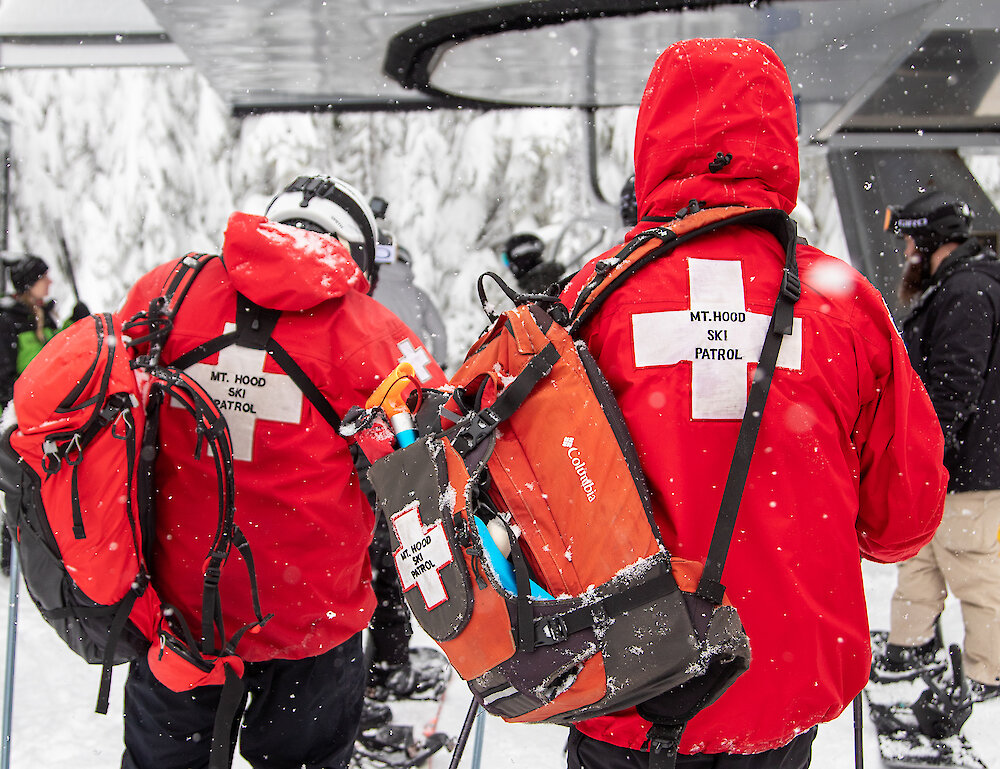
SKI PATROL
Ski Patrol is your go-to for weather, snow, run tips, and closures. Find us and ask—we’re here to help you enjoy the mountain safely!
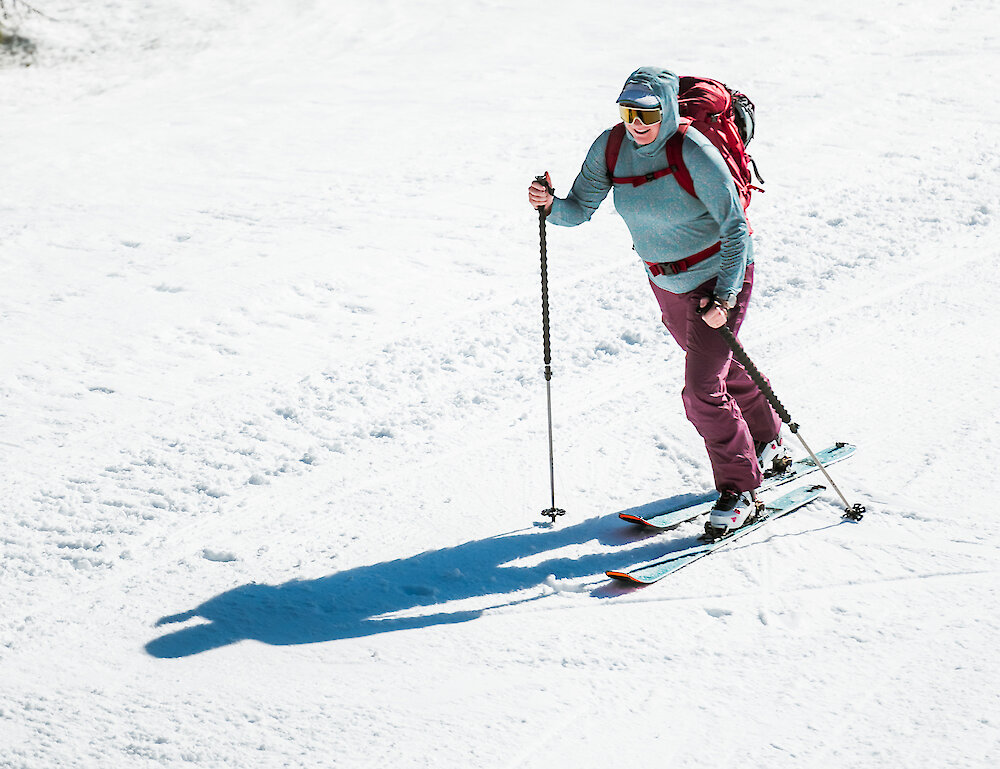
UPHILL TRAVEL PASS
Timberline’s Uphill Travel Policy allows for uphill travel on designated routes during hours of operation. Guests must have a (free) Uphill Travel Pass to access.